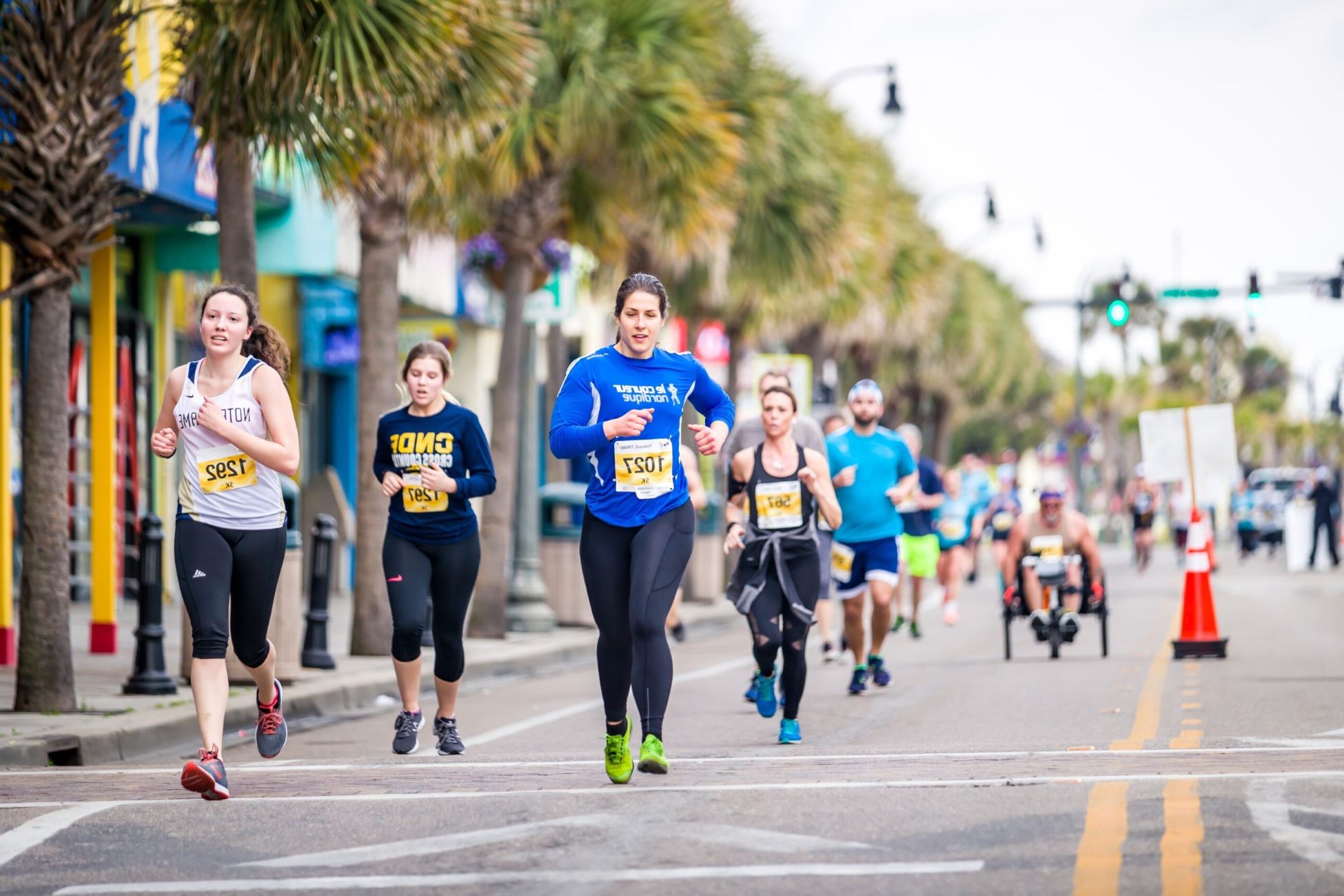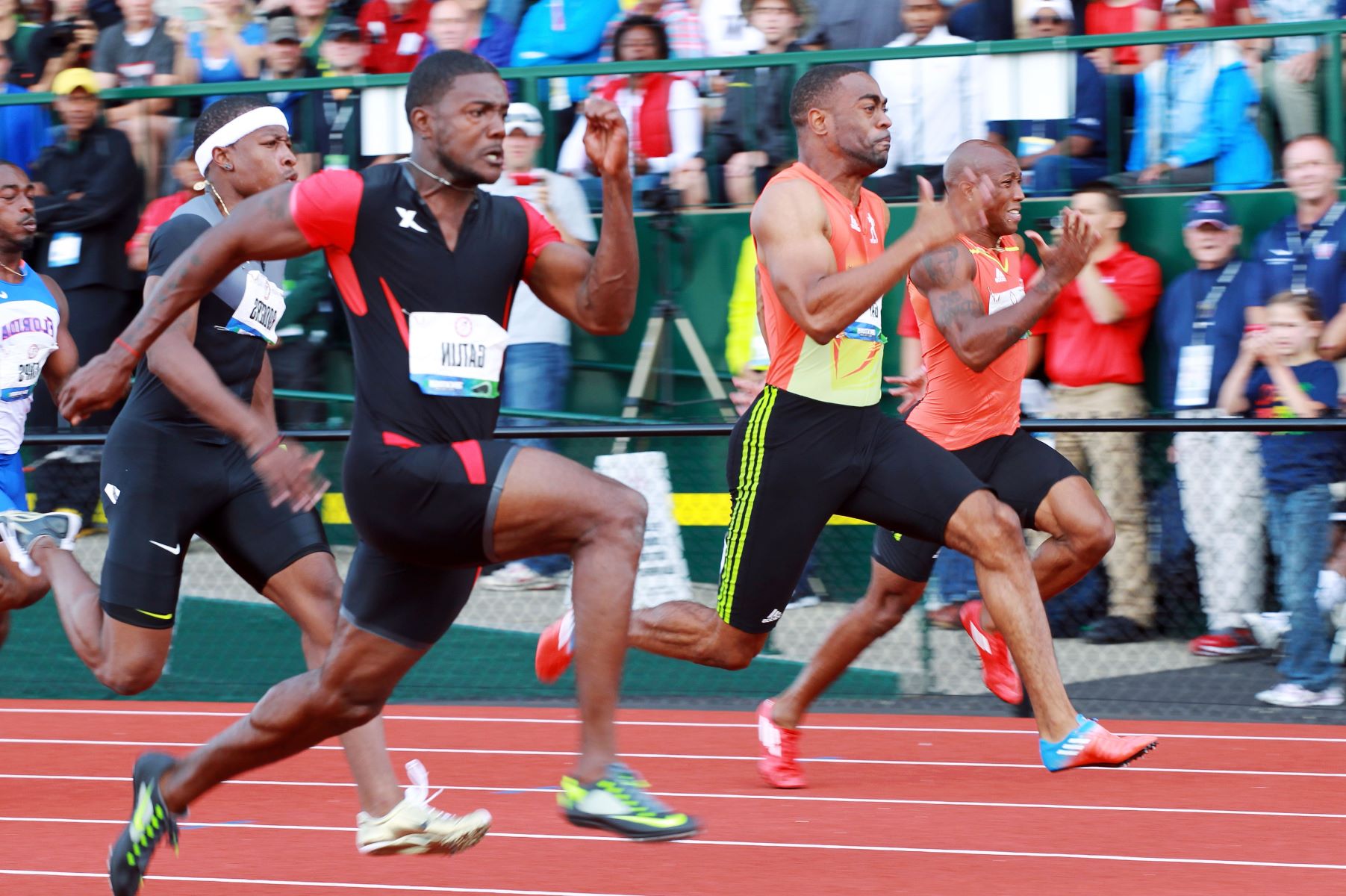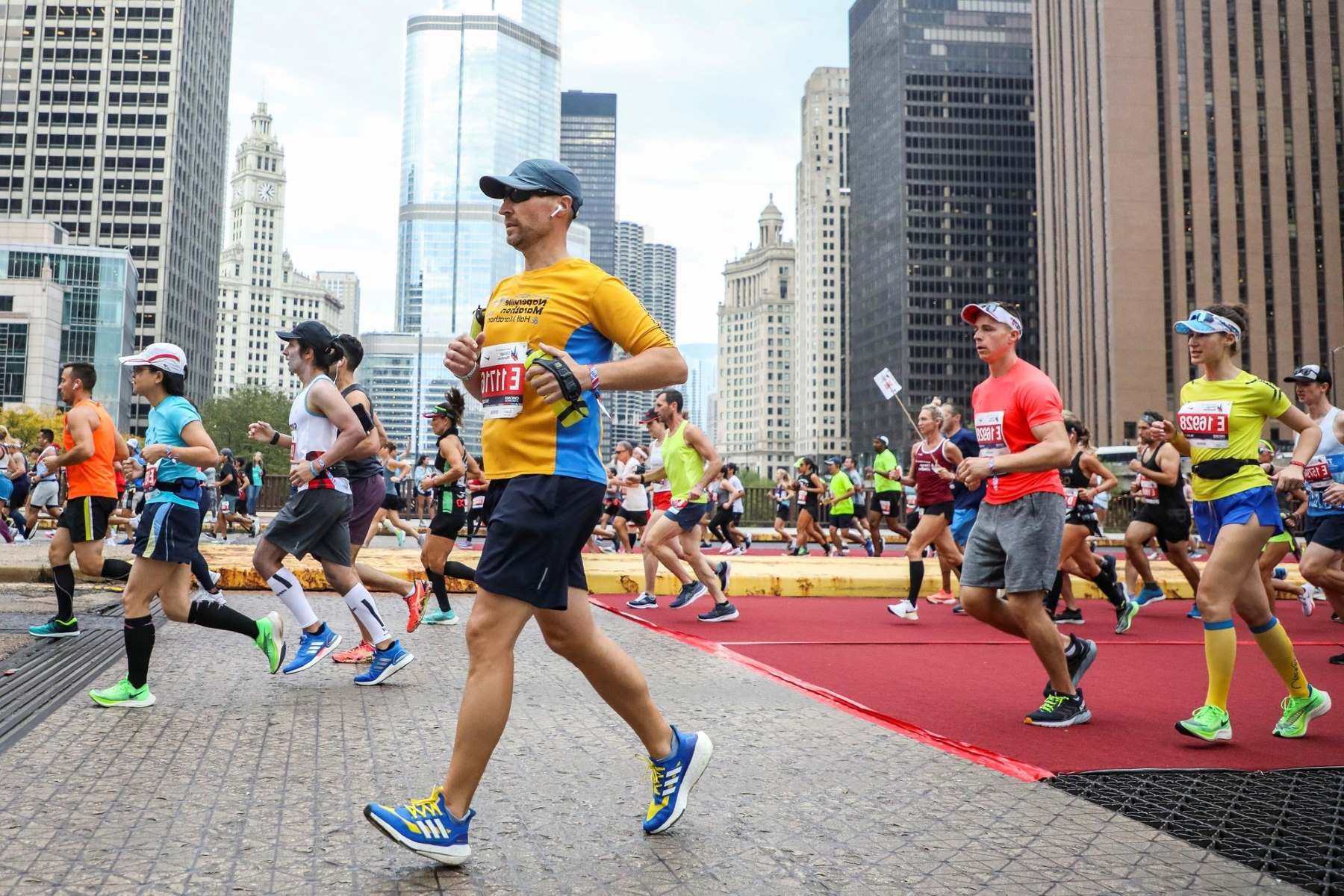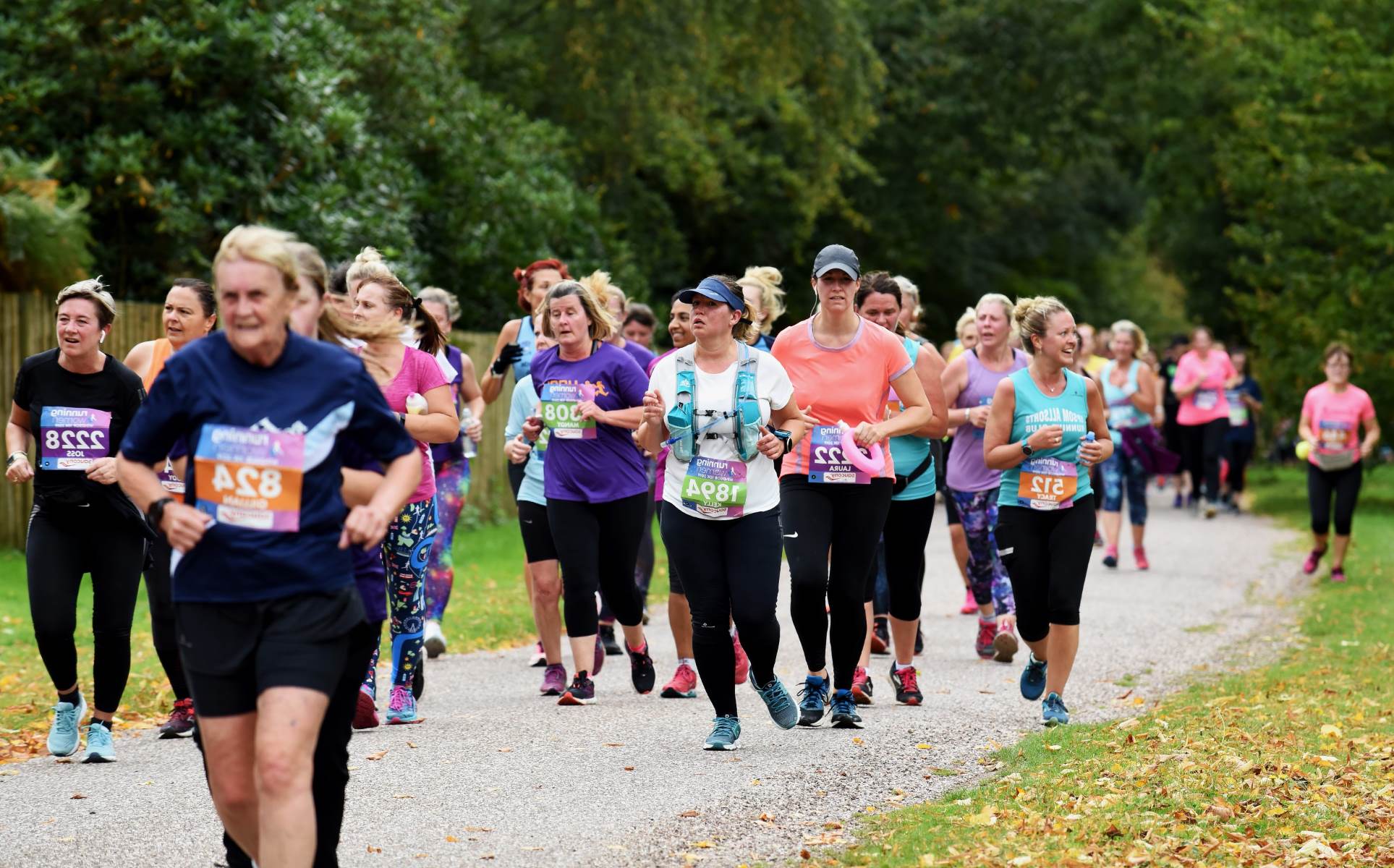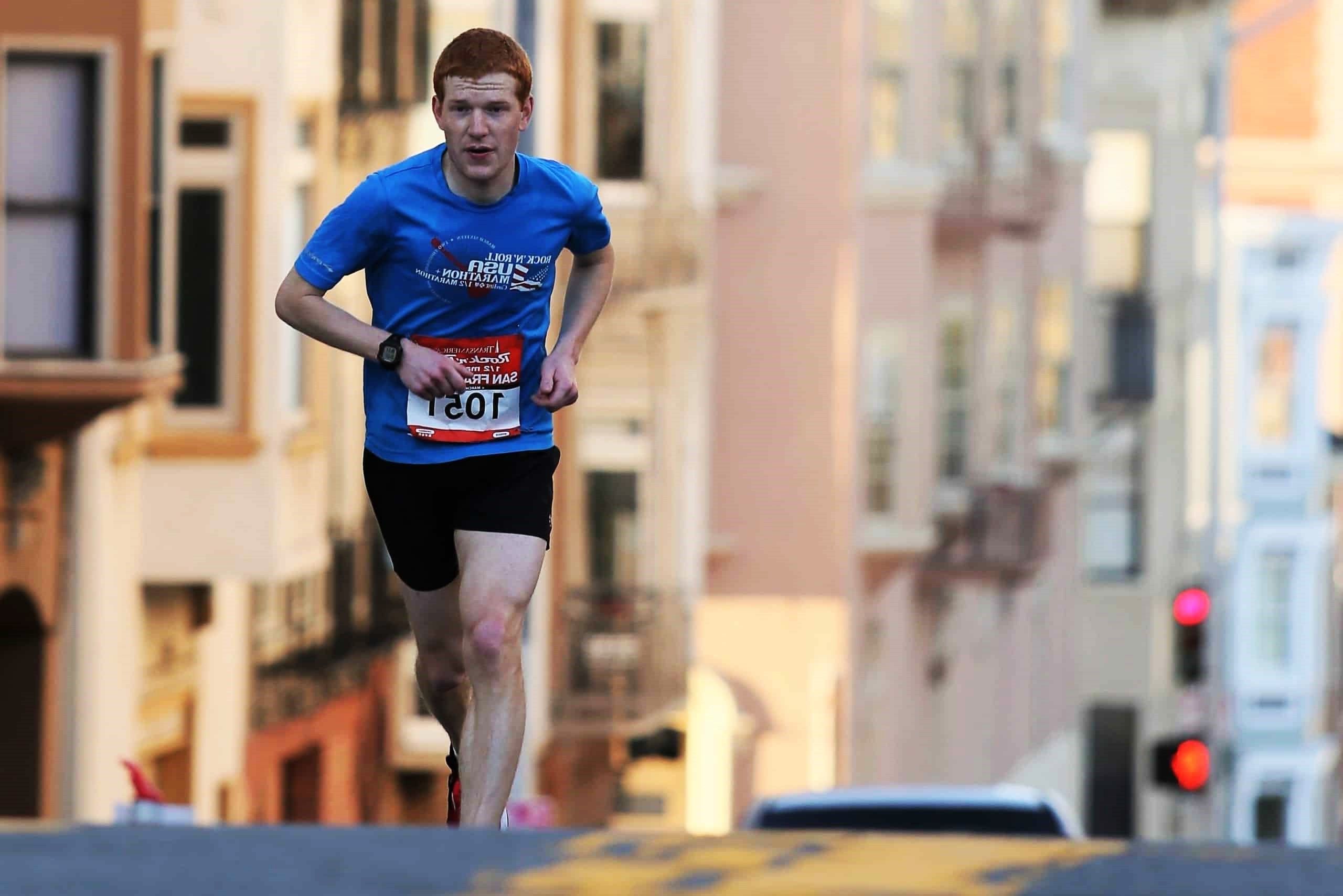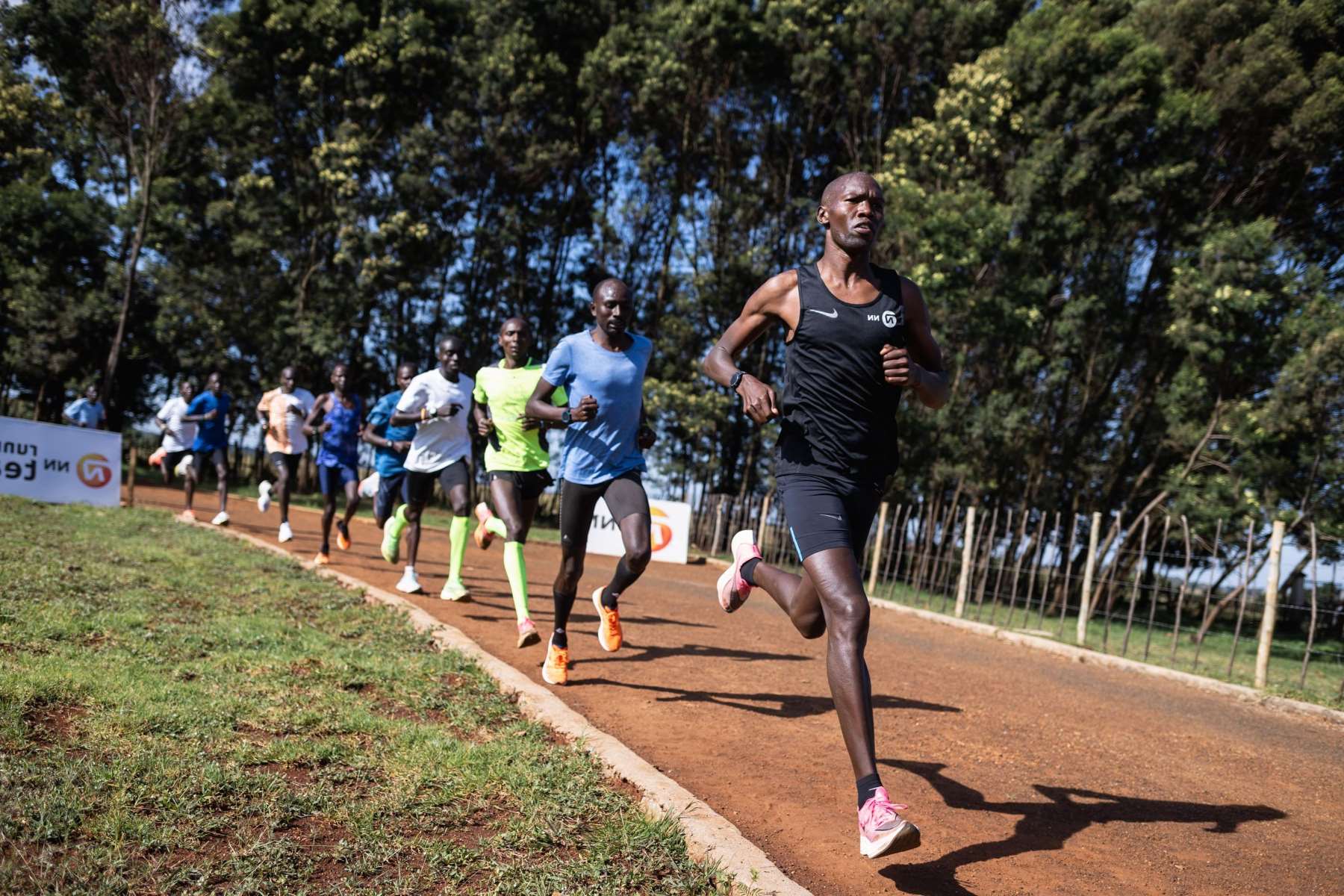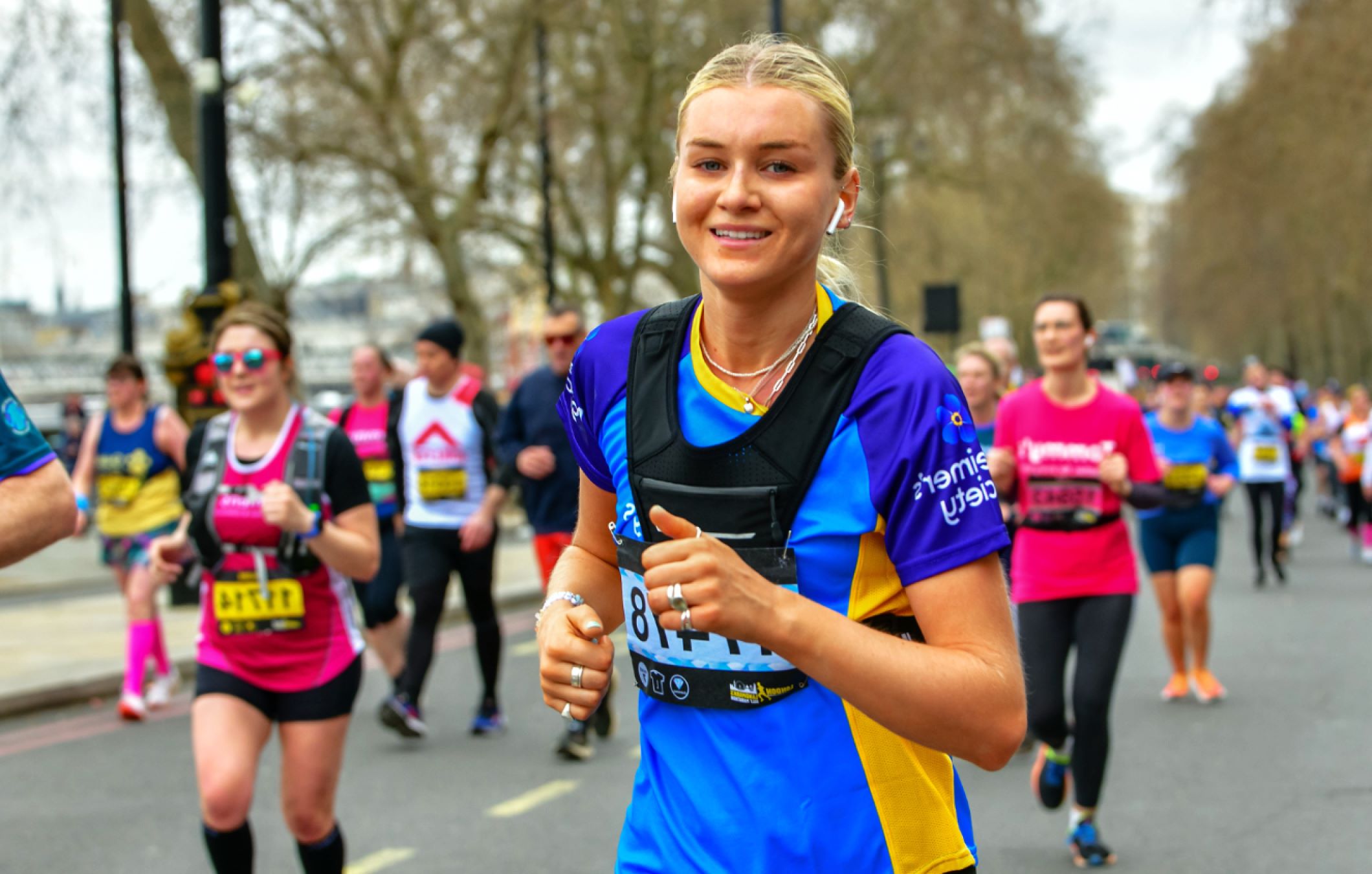Home>Training & Techniques>A Comprehensive Guide For Editors On How To Improve Their 5k Running Speed
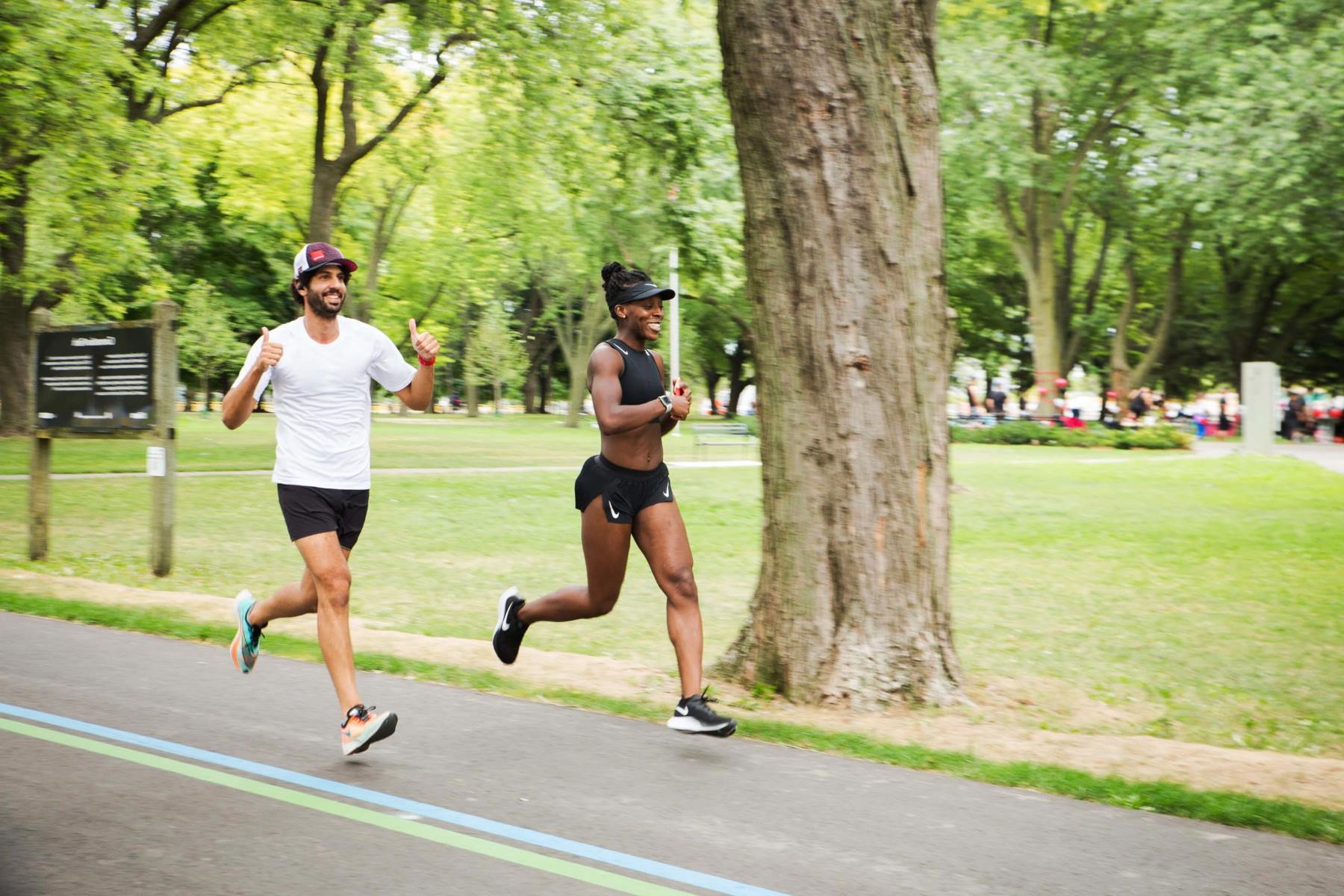

Training & Techniques
A Comprehensive Guide For Editors On How To Improve Their 5k Running Speed
Published: March 6, 2024
Discover effective training and techniques to enhance your 5k running speed with our comprehensive guide for editors. Unlock your potential and achieve your goals today!
(Many of the links in this article redirect to a specific reviewed product. Your purchase of these products through affiliate links helps to generate commission for Therunningadvisor.com, at no extra cost. Learn more)
Table of Contents
- Understanding the Importance of Speed in 5k Running
- Analyzing Your Current Running Technique
- Implementing Interval Training for Speed Improvement
- Incorporating Strength Training for Enhanced Performance
- Optimizing Your Nutrition for Better Running Speed
- Utilizing Proper Rest and Recovery Techniques
- Setting Realistic Goals and Tracking Progress
- Incorporating Mental Strategies for Improved Performance
- Avoiding Common Mistakes in Speed Training
- Seeking Professional Coaching and Guidance
Understanding the Importance of Speed in 5k Running
Speed is a crucial factor in 5k running, significantly impacting an athlete's overall performance. Whether you're a seasoned runner or just starting out, improving your speed can lead to enhanced race times and a more fulfilling running experience. In the context of a 5k race, speed directly influences your ability to maintain a consistent pace and finish strong. Understanding the significance of speed in 5k running can provide valuable insights into the training and techniques necessary to achieve optimal results.
When it comes to 5k running, speed is not solely about sprinting; rather, it encompasses the ability to sustain a challenging pace over a relatively short distance. This requires a combination of endurance, strength, and efficient running mechanics. By focusing on speed improvement, runners can enhance their cardiovascular capacity, muscular endurance, and overall running economy. Additionally, developing speed can lead to increased mental toughness and confidence, enabling runners to push through discomfort and perform at their best.
In the realm of competitive 5k racing, speed plays a pivotal role in determining race outcomes. The ability to accelerate, maintain a swift pace, and execute strategic surges can be the difference between securing a personal best time and falling short of one's goals. Furthermore, honing speed skills can elevate a runner's ability to navigate varied terrain and adapt to race-day conditions, such as inclines, declines, and sharp turns.
For recreational runners, improving speed can inject a sense of excitement and accomplishment into their training regimen. It opens the door to new challenges, such as participating in speed-focused workouts and benchmarking progress through timed intervals. By embracing the pursuit of speed, runners can infuse their routine with a dynamic element that fosters continuous improvement and a deeper connection to the sport.
In essence, understanding the importance of speed in 5k running underscores its multifaceted impact on performance, mindset, and overall running experience. By recognizing the value of speed enhancement, runners can embark on a purposeful journey toward achieving their full potential and reaping the rewards of their dedication and perseverance.
Read more: Improve Your 5K Speed With This Workout
Analyzing Your Current Running Technique
Assessing your current running technique is a fundamental step in the quest to improve your 5k running speed. It involves a comprehensive evaluation of various aspects of your running form, stride mechanics, and overall movement patterns. By gaining insights into your existing technique, you can identify areas for improvement and lay the groundwork for targeted training and refinement.
Begin by observing your running posture and body alignment. Pay close attention to how your upper body, lower body, and arms are positioned while in motion. Your posture should be upright, with a slight forward lean from the ankles, promoting efficient forward propulsion. Additionally, ensure that your arms move in a coordinated manner, complementing the rhythm of your strides.
Next, focus on your foot strike and cadence. Take note of how your feet make contact with the ground and the frequency of your strides. Ideally, your foot strike should be balanced, landing mid-foot to promote optimal shock absorption and energy transfer. Aim for a cadence of around 170-180 steps per minute, which can help enhance your running efficiency and reduce the risk of overstriding.
Evaluate your breathing pattern and overall body relaxation while running. Efficient breathing plays a crucial role in sustaining your energy levels and optimizing oxygen intake. Practice rhythmic breathing, syncing your inhalations and exhalations with your strides to establish a harmonious breathing rhythm. Additionally, strive to maintain a relaxed posture and minimize tension in your muscles, allowing for fluid and efficient movement.
Consider seeking feedback from experienced runners or coaches to gain an external perspective on your running technique. Video analysis can also be a valuable tool for scrutinizing your form and identifying any potential areas of improvement. By leveraging external feedback and visual aids, you can gain valuable insights that may not be apparent during your own self-assessment.
In essence, analyzing your current running technique serves as a foundational step in the pursuit of speed improvement. By meticulously examining your form, stride mechanics, and overall movement patterns, you can pinpoint specific areas for enhancement and lay the groundwork for targeted training and refinement. This introspective process sets the stage for a purposeful and informed approach to optimizing your running technique and ultimately elevating your 5k running speed.
Implementing Interval Training for Speed Improvement
Interval training stands as a cornerstone in the pursuit of speed improvement for 5k running. This structured approach to training involves alternating between intense bursts of effort and periods of active recovery. By incorporating interval training into your regimen, you can effectively target and enhance various physiological and performance factors that directly contribute to improved running speed.
The essence of interval training lies in its ability to elevate both aerobic and anaerobic capacities. During high-intensity intervals, runners push their cardiovascular system to operate at near-maximal levels, fostering adaptations that enhance oxygen utilization and cardiovascular efficiency. This translates to improved endurance and the ability to sustain a faster pace over the duration of a 5k race. Additionally, the anaerobic component of interval training stimulates the development of fast-twitch muscle fibers, crucial for generating explosive power and speed.
A well-structured interval training session typically involves a warm-up period followed by several cycles of high-intensity efforts and recovery intervals. For instance, a common approach is the "4×4-minute" interval, where runners exert maximum effort for 4 minutes, followed by 3-4 minutes of active recovery. This pattern can be tailored to suit individual fitness levels and performance goals, allowing for progressive overload and adaptation over time.
Furthermore, interval training promotes enhanced running economy, a key factor in optimizing speed. By repeatedly challenging the body to operate at higher intensities, runners can refine their biomechanics, stride efficiency, and neuromuscular coordination. This, in turn, leads to a more economical running form, where energy expenditure is minimized, and forward propulsion is maximized, ultimately contributing to improved speed and performance.
Incorporating interval training into your routine demands a balanced approach, considering factors such as workout intensity, duration, and recovery periods. It is essential to gradually introduce interval sessions into your training schedule, allowing for adequate adaptation and recovery between sessions. Additionally, monitoring progress and adjusting the intensity and volume of intervals as fitness improves is crucial for sustained speed enhancement.
In essence, implementing interval training for speed improvement offers a structured and effective means of targeting key physiological and performance factors. By strategically integrating high-intensity efforts and recovery intervals, runners can stimulate adaptations that enhance aerobic and anaerobic capacities, refine running economy, and ultimately elevate their 5k running speed. This deliberate and systematic approach to training serves as a potent tool in the pursuit of speed improvement, empowering runners to unlock their full potential and achieve their performance goals.
Incorporating Strength Training for Enhanced Performance
Strength training serves as a pivotal component in the pursuit of enhanced performance in 5k running. By integrating targeted strength exercises into your training regimen, you can effectively bolster muscular strength, power, and endurance, thereby optimizing your capacity to generate speed and sustain performance over the course of a race.
The primary objective of strength training for 5k running is to fortify the musculature essential for efficient running mechanics and dynamic movement. This encompasses the development of lower body strength, particularly in the quadriceps, hamstrings, glutes, and calves, which are instrumental in generating propulsive force and maintaining stride integrity. Additionally, a strong and stable core is paramount for maintaining posture, minimizing energy loss, and facilitating efficient energy transfer during running.
Incorporating exercises such as squats, lunges, deadlifts, and calf raises can effectively target the major muscle groups involved in running, fostering strength development and neuromuscular coordination. Furthermore, plyometric exercises, including box jumps, bounding, and agility drills, can enhance explosive power and reactive strength, translating to improved acceleration and speed capabilities.
It is essential to approach strength training with a focus on functional movements and sport-specific adaptations. By replicating the dynamic demands of running within the strength training regimen, runners can cultivate strength that directly translates to enhanced performance on the track or road. This entails integrating exercises that mimic the range of motion, force production, and neuromuscular coordination required during running, thereby fostering a seamless transfer of strength gains to improved running speed and efficiency.
Moreover, a well-structured strength training program should encompass a balance between muscular endurance, power, and stability. This multifaceted approach ensures that runners develop comprehensive strength attributes that complement their running performance. Additionally, incorporating unilateral exercises and stability drills can address muscular imbalances and enhance proprioception, contributing to improved running mechanics and injury prevention.
In essence, incorporating strength training for enhanced performance in 5k running represents a strategic investment in developing the physical attributes necessary for speed and endurance. By targeting specific muscle groups, fostering functional strength adaptations, and embracing a comprehensive approach to strength development, runners can elevate their performance potential and unlock new levels of speed and efficiency. This deliberate integration of strength training into the training regimen underscores its profound impact on 5k running performance, empowering runners to realize their aspirations and excel in their athletic pursuits.
Optimizing Your Nutrition for Better Running Speed
Optimizing nutrition is a critical aspect of enhancing running speed and overall performance in 5k races. The fuel you provide your body directly impacts energy levels, endurance, and recovery, all of which are integral to achieving better running speed. By strategically managing your dietary intake, you can maximize your running potential and elevate your performance on race day.
A balanced and nutrient-rich diet forms the foundation of optimal running nutrition. Prioritize a variety of whole foods, including lean proteins, complex carbohydrates, healthy fats, and an abundance of fruits and vegetables. These components provide essential macronutrients and micronutrients that support energy production, muscle repair, and overall well-being. Additionally, adequate hydration is paramount for maintaining optimal performance and preventing dehydration, which can significantly impair running speed and endurance.
Strategic timing of meals and snacks is crucial for fueling your runs and facilitating recovery. Consuming a balanced meal containing carbohydrates and protein 2-3 hours before a run can provide sustained energy and support muscle function. Additionally, incorporating easily digestible snacks, such as a banana or energy bar, 30-60 minutes before a run can offer a quick source of fuel without causing digestive discomfort.
During longer training runs and races, it's essential to replenish glycogen stores and maintain hydration. Consuming easily digestible carbohydrates, such as energy gels or sports drinks, can provide a quick source of energy to sustain running speed and endurance. Hydration should be a continuous focus, with regular intake of water or electrolyte-rich fluids to offset fluid loss and maintain optimal performance.
Post-run nutrition plays a pivotal role in recovery and adaptation. Consuming a combination of carbohydrates and protein within 30-60 minutes after a run can facilitate muscle glycogen replenishment and repair, supporting recovery and preparing the body for subsequent training sessions. Additionally, incorporating anti-inflammatory foods, such as tart cherry juice or turmeric, can aid in reducing muscle soreness and accelerating recovery.
Supplementation can complement a well-rounded nutrition plan, providing additional support for running performance. Omega-3 fatty acids, vitamin D, and iron are among the key supplements that can benefit runners by promoting cardiovascular health, immune function, and oxygen transport within the body.
In essence, optimizing your nutrition for better running speed involves a holistic approach to fueling and nourishing your body for optimal performance. By prioritizing nutrient-dense foods, strategic meal timing, hydration, and post-run recovery nutrition, runners can harness the power of nutrition to enhance their running speed, endurance, and overall race-day performance. This deliberate focus on nutrition serves as a potent tool in the pursuit of running excellence, empowering athletes to maximize their potential and achieve their performance goals.
Read more: Expert Tips For Running A Sub 20 5k
Utilizing Proper Rest and Recovery Techniques
Proper rest and recovery techniques are integral components of a comprehensive training regimen for 5k running, playing a pivotal role in optimizing performance, preventing injuries, and sustaining long-term progress. Embracing strategic rest and recovery practices is essential for allowing the body to adapt to training stimuli, repair muscle tissue, and replenish energy stores, ultimately contributing to improved running speed and overall athletic prowess.
Adequate sleep stands as a cornerstone of effective rest and recovery. Quality sleep is paramount for physiological and psychological rejuvenation, facilitating hormone regulation, muscle repair, and cognitive function. Aim for 7-9 hours of uninterrupted sleep each night, prioritizing consistent sleep patterns to optimize recovery and promote overall well-being.
Active recovery, encompassing low-intensity activities such as walking, swimming, or gentle yoga, can aid in promoting circulation, reducing muscle soreness, and enhancing recovery between intense training sessions. Engaging in light, non-impactful exercises on rest days can facilitate blood flow to fatigued muscles, expediting the removal of metabolic byproducts and promoting tissue repair.
Incorporating targeted recovery modalities, such as foam rolling, massage therapy, and contrast water therapy, can further enhance the recovery process. These techniques can alleviate muscle tension, improve flexibility, and mitigate the effects of training-induced microtrauma, fostering expedited recovery and readiness for subsequent training sessions.
Nutrition plays a pivotal role in post-exercise recovery, with a focus on replenishing glycogen stores, supporting muscle repair, and minimizing inflammation. Consuming a balanced meal or snack containing carbohydrates and protein within the post-exercise window can facilitate glycogen replenishment and muscle recovery, setting the stage for optimal adaptation and subsequent training sessions.
Strategic rest periods within the training schedule are essential for preventing overtraining and burnout. Incorporating scheduled rest days and recovery weeks allows the body to adapt to training stress, reducing the risk of injury and mental fatigue while promoting long-term performance gains. Embracing a periodized training approach, alternating between high-intensity training phases and recovery periods, can optimize adaptation and performance outcomes.
In essence, utilizing proper rest and recovery techniques is a fundamental aspect of maximizing training adaptations and enhancing running speed for 5k races. By prioritizing quality sleep, active recovery, targeted recovery modalities, strategic nutrition, and scheduled rest periods, runners can cultivate a balanced and sustainable approach to training, fostering resilience, and performance excellence. This deliberate focus on rest and recovery serves as a potent tool in the pursuit of running mastery, empowering athletes to optimize their potential and achieve peak performance on race day.
Setting Realistic Goals and Tracking Progress
Setting realistic and measurable goals is a fundamental aspect of optimizing performance in 5k running. By establishing clear objectives that align with your current abilities and aspirations, you can create a roadmap for progress and maintain motivation throughout your training journey. When setting goals, it's essential to consider both short-term milestones and long-term aspirations, ensuring that they are attainable yet sufficiently challenging to drive continuous improvement.
Begin by defining specific performance targets, such as achieving a certain race time, improving running speed over a designated distance, or mastering a particular training regimen. These goals should be framed in a manner that is realistic and reflective of your current fitness level, allowing for incremental advancement while acknowledging the potential for setbacks and obstacles along the way.
In addition to setting outcome-based goals, it's valuable to establish process-oriented objectives that focus on the consistent application of effective training techniques and strategies. This could involve committing to a specified number of weekly training sessions, incorporating targeted speed workouts into your regimen, or prioritizing recovery practices to support ongoing progress.
Tracking progress is integral to goal attainment, providing valuable insights into your performance, strengths, and areas for improvement. Utilize tools such as training logs, running apps, or wearable fitness devices to monitor key metrics, including running times, distances covered, heart rate variability, and perceived exertion levels. By systematically documenting your training and race performances, you can gain a comprehensive understanding of your progress and make informed adjustments to your training approach.
Moreover, celebrate incremental victories and milestones along the way, acknowledging the progress made toward your overarching goals. Recognizing and appreciating the small wins can bolster motivation and reinforce your commitment to the pursuit of speed improvement in 5k running.
By setting realistic goals and diligently tracking your progress, you can cultivate a purposeful and informed approach to training, fostering accountability, resilience, and a sense of accomplishment. This deliberate focus on goal setting and progress tracking serves as a potent catalyst for sustained improvement, empowering you to realize your full potential and achieve your desired performance outcomes in 5k running.
Incorporating Mental Strategies for Improved Performance
In the realm of 5k running, the significance of mental fortitude and strategic mindset cannot be overstated. Incorporating mental strategies into your training and race preparation can yield profound effects on performance, resilience, and overall running experience. By harnessing the power of the mind, runners can cultivate a resilient and focused approach that transcends physical capabilities, ultimately leading to improved running speed and race-day success.
One of the fundamental mental strategies for enhanced performance is cultivating a positive and resilient mindset. This involves fostering a constructive outlook on training challenges, setbacks, and race-day obstacles. By reframing adversity as an opportunity for growth and learning, runners can build mental resilience and fortitude, enabling them to navigate the rigors of 5k racing with composure and determination.
Visualization stands as a potent mental tool for optimizing performance in 5k running. By vividly imagining successful race scenarios, executing efficient running mechanics, and surmounting challenging race conditions, runners can prime their minds and bodies for peak performance. Visualization techniques can instill confidence, reduce pre-race anxiety, and enhance mental preparedness, ultimately contributing to improved running speed and execution.
Embracing mindfulness and present-moment awareness can profoundly impact running performance. By cultivating a focused and attentive mindset during training runs and races, runners can optimize their running form, breathing rhythm, and pacing strategies. Mindfulness techniques can mitigate distractions, enhance concentration, and foster a deeper connection to the running experience, ultimately leading to improved speed and performance outcomes.
Strategic goal setting and mental preparation are integral components of mental strategies for improved performance. By establishing clear and attainable race-day objectives, runners can channel their focus and motivation toward specific performance targets. Additionally, mental preparation techniques, such as positive self-talk, affirmation, and pre-race routines, can instill confidence, composure, and readiness for optimal performance in 5k running.
In essence, incorporating mental strategies for improved performance in 5k running represents a holistic and multifaceted approach to optimizing athletic prowess. By cultivating a positive and resilient mindset, leveraging visualization techniques, embracing mindfulness, and engaging in strategic mental preparation, runners can harness the power of the mind to elevate their running speed, endurance, and overall race-day performance. This deliberate focus on mental strategies serves as a potent catalyst for unlocking peak performance and realizing one's full potential in the pursuit of 5k running excellence.
Avoiding Common Mistakes in Speed Training
Avoiding common mistakes in speed training is pivotal to the success of 5k runners seeking to enhance their performance. By recognizing and addressing these pitfalls, athletes can optimize their training approach, minimize the risk of injury, and maximize the efficacy of their speed-focused workouts.
One prevalent mistake in speed training is neglecting proper warm-up and cooldown routines. Failing to adequately prepare the body for high-intensity efforts can increase the likelihood of muscle strains, fatigue, and compromised performance. Similarly, overlooking the importance of a thorough cooldown can impede recovery and hinder subsequent training sessions. By prioritizing dynamic warm-up exercises and incorporating gradual cooldown protocols, runners can mitigate the risk of injury and optimize the physiological response to speed training.
Another common misstep is overemphasizing speed work at the expense of overall training balance. While speed-focused workouts are integral to performance improvement, excessive emphasis on high-intensity intervals without sufficient recovery and base-building phases can lead to burnout, overtraining, and diminished long-term progress. It is essential to integrate speed training within a comprehensive training plan that includes adequate recovery, endurance development, and strength conditioning, ensuring a balanced and sustainable approach to performance enhancement.
Furthermore, neglecting proper form and biomechanics during speed training can compromise the effectiveness of the workouts and increase the risk of injury. Engaging in high-speed efforts with inefficient running mechanics can lead to energy wastage, increased impact forces, and heightened susceptibility to overuse injuries. By prioritizing form drills, technique refinement, and mindful running during speed workouts, runners can optimize their movement patterns, reduce injury risk, and enhance the transfer of speed gains to race-day performance.
Inadequate recovery between speed training sessions is another common pitfall that can impede progress and increase the likelihood of overuse injuries. Failing to allow for sufficient rest and adaptation following intense speed workouts can hinder performance gains and compromise long-term development. By incorporating strategic recovery periods, prioritizing sleep, and embracing active recovery practices, runners can optimize the physiological adaptations to speed training and minimize the risk of overtraining.
In essence, avoiding common mistakes in speed training is essential for optimizing performance, minimizing injury risk, and fostering long-term progress in 5k running. By addressing these pitfalls and embracing a balanced, informed, and mindful approach to speed training, athletes can unlock their full potential and achieve their desired performance outcomes.
Seeking Professional Coaching and Guidance
Seeking professional coaching and guidance stands as a transformative step in the pursuit of optimal performance and speed improvement in 5k running. The expertise and insights offered by experienced coaches can provide invaluable support, direction, and personalized strategies tailored to an individual's unique strengths and areas for improvement.
Professional coaches bring a wealth of knowledge and experience to the table, offering a comprehensive understanding of training principles, biomechanics, and performance optimization. Their expertise allows them to assess an athlete's current capabilities, identify areas for enhancement, and develop a structured training plan that aligns with specific performance goals. By leveraging the guidance of a coach, runners can benefit from a customized approach to speed improvement, integrating targeted workouts, recovery strategies, and race preparation techniques that cater to their individual needs.
Moreover, professional coaching offers a level of accountability and motivation that can significantly impact an athlete's commitment and progress. Coaches provide ongoing support, feedback, and encouragement, fostering a sense of accountability that drives consistent training adherence and performance optimization. Additionally, the mentorship and guidance provided by coaches can instill a heightened sense of motivation, belief, and resilience, empowering runners to push beyond their perceived limits and strive for continuous improvement.
Furthermore, professional coaches play a pivotal role in injury prevention and management, offering insights into proper form, recovery practices, and training load management. Their expertise in identifying potential risk factors and addressing biomechanical inefficiencies can mitigate the likelihood of overuse injuries and setbacks, ensuring that runners can sustain their training momentum and progress without compromising their well-being.
In addition to technical guidance, professional coaching encompasses mental and emotional support, nurturing a positive and resilient mindset that is essential for performance excellence. Coaches can provide strategies for managing pre-race nerves, overcoming mental barriers, and cultivating a focused and determined approach to training and racing. This holistic support fosters a well-rounded and empowered athlete, capable of harnessing their full potential and achieving their performance aspirations.
In essence, seeking professional coaching and guidance represents a pivotal investment in one's running journey, offering a wealth of benefits that extend beyond mere technical instruction. By embracing the expertise, mentorship, and support of a professional coach, runners can unlock new levels of performance, resilience, and fulfillment, ultimately realizing their aspirations and achieving their desired speed improvement in 5k running.


